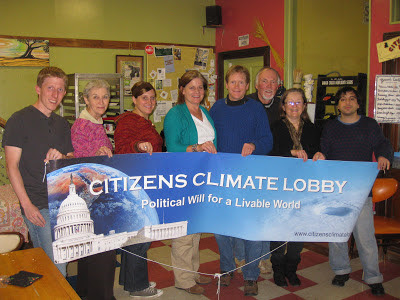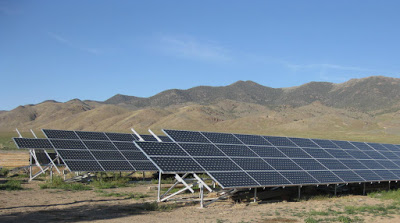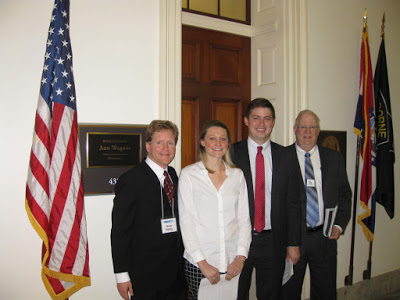“Politicians don’t create political will. They respond to it.” – Mark Reynolds, Executive Director of Citizens’ Climate Lobby.
Are you alarmed about climate change but you are unsure what to do? At some point, you must decide to become part of the solution. You must rise up and take action. The famous quote attributed to Mahatma Gandhi famously says, ‘You must be the change you seek in the world.’
Wow! That is a very broad statement. But, how are we to be the change? What must we do?
For me, the road map for action with a very complex problem like climate change comes from this quote from Dr. Martin Luther King, Jr:
 |
| Martin Luther King, Jr. Image Source: biography.com |
“Through education we seek to change attitudes; through legislation and court orders we seek to regulate behavior. Through education we seek to change internal feelings; through legislation and court orders we seek to control the external effects of those feelings. Through education we seek to break down the spiritual barriers to integration; through legislation and court orders we seek to break down the physical barriers to integration. One method is not a substitute for the other, but a meaningful and necessary supplement. Anyone who starts out with the conviction that the road to racial justice is only one lane wide will inevitably create a traffic jam and make the journey longer.”
Yes, individual actions to reduce your carbon footprint are great. Since November 2011, I have been giving this talk about energy efficiency around the St. Louis area called “It’s Easy to Be Green.” In this talk, I definitely encourage people to change their light bulbs and give tips our to cut their energy bills. However, this not enough to save us from the worst impacts of climate change.
As Al Gore said in 2008 during a TED talk,
“As important as it is to change the light bulbs, it is more important to change the laws.”
Here are two of my biggest heroes, Dr. Martin Luther King, Jr and former Vice President Al Gore telling me that I am going to have to find a way to change the laws. Gulp. It is so much easier for me to just write and give public talks.
Fortunately, as mythologist Joseph Campbell said about the hero’s journey that you don’t have to do it alone. You can bring friends, partners, and others along to complete the journey. Success on this journey is a creating the political will to change the laws for a stable climate.
The most effective group I know that is doing this is Citizens’ Climate Lobby (CCL). I first blogged about the impact CCL had on my life with the blog posts from January 2013, Want to change the world? Be Persistent! and from November 2013 Want to change to change the world? Then start a climate change group!
Citizens’ Climate Lobby’s methodology
Around the time of writing that second blog in November 2013, Carol Braford asked me to be the co-leader of the St. Louis group of Citizens’ Climate Lobby. With my love of public speaking about climate change, Carol then recruited me to speak at the April 2014 Webster University Sustainability Conference.
The title of my talk was Citizens’ Climate Lobby’s central mission: Creating the Political Will for a Livable World. CCL creates this political will by empowering individuals, like you and me, to experience breakthroughs in exercising their personal and political power.
My presentation at Webster began by asking the vital question: Do you know who your Congressperson is?
This was a sophisticated, informed audience attending a sustainability conference at a university, so they did not seem to have trouble answering this question. However, this is a crucial question to ask because CCL is “betting the ranch on relationships,” as Executive Director Mark Reynolds likes to say.
CCL primary focus is to lobby in support of their Carbon Fee and Dividend proposal by friendly relationships with our federally elected representatives. CCL volunteers and staff achieves this positive rapport with members of Congress and their staff by showing respect, appreciation and gratitude for their service.
Obviously, before you can develop a great working relationship with a member of Congess, you have to know who exactly is your member of Congress.
The Success of RESULTS and Sam Daley-Harris
The methodology of Citizens’ Climate Lobby can be traced back to an organization working to eliminate global poverty called Results and its founder, Sam Daley-Harris. To prepare for my Webster talk on CCL, I read Sam Daly Harris’ book, Reclaiming our Democracy. This is book is an excellent resource for those looking for proven models for how to successfully lobby members of Congress to get legislation passed.
 |
| Sam Daley-Harris Image: reclaimingourdemocracy.com |
This book is a must read because it is about gaining hope and inspiration to become a fully engaged citizen. The subtitle nails how we overcome the pessimism and despair we feel with our current democracy, “Healing the Break Between People and Government.” Sam states early in his own introduction that “Reclaiming Our Democracy’ is a book that challenges this civic despair and offers a new model of citizen empowerment and leadership.”
It is so easy to become cynical about politics when you turn on the TV news, open up the newspaper, and chat with friends. Sam shares his story how he founded and spent years developing the organization, RESULTS. This organization, founded by Daley-Harris around 1980, created a new model for citizen activism with its dedication to create the political will to end world hunger. The achievements of RESULTS highly motivated citizen volunteers regularly engaged their elected members of Congress is beyond impressive.
According to the RESULTS.org website, over the past 35 years, RESULTS has accomplished:
* Child deaths are down by nearly two-thirds.
• The number of children in primary school has doubled.
• TB deaths have fallen by almost half.
• More than 1 billion people have moved out of extreme poverty.
• Safety net programs cut the U.S. poverty rate nearly in half every year.
• Micro nance programs have reached 114 million families living in extreme poverty.
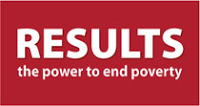 |
| Image Source: results.org |
These results may not have occurred without the founding vision of Sam Daley-Harris guiding this organization from the beginning. We tend to think that great people are somehow different than us. Before he decided to become a citizen organizer, in the late 1970s, Sam was a high school music teacher and a percussionist with the Miami Philharmonic Symphony. Early in the book, Sam shares a quote by futurist and inventor Buckminster Fuller:
“The things to do are the things that need doing, that you see need to be done and that no one else seems to see needs to be done.”
While working as a teacher, Sam stumbled across a world hunger presentation from his yoga teacher. He decided to get involved by speaking to hundreds of high school students for the political will to end world hunger. He soon discovered that almost all high school students and adults did not even know their members of Congress. The following chapters then recounts how Sam traveled across the United States and world to recruit people to get involved with RESULTS and form their own local chapters. Sam then writes how he and the RESULTS volunteers continuously lobbied Congress to finally get them to pass funding bills to successfully reduce world hunger.
 |
| Carol & Tom Braford |
Dedicated former RESULTS volunteers included friends I now know from Citizens’ Climate Lobby: retired San Diego real estate broker Marshall Saunders and St. Louis residents Tom & Carol Braford. RESULTS showed such a successful model for citizen engagement to get Congress to pass legislation. Marshall Saunders then used the RESULTS’ model with the blessing and mentoring of Sam Daley-Harris to create Citizens’ Climate Lobby (CCL).
As a climate activist, this was the group I was the group I was seeking my whole life. From the template of RESULTS, Citizens’ Climate Lobby’s mission is to “create the political will for climate solutions by enabling individual breakthroughs in personal and political power.” CCL borrowed from RESULTS the political will to regularly engage members of Congress with letters, meetings and letters to the editor in their newspapers. When they met with elected officials they would show them respect, gratitude and admiration so the members of Congress would be more willing to listen to the ideas to end global poverty or climate change.
According to Sam, meeting and fully engaging our elected officials is the best way to be an effective citizen advocate. Early in his book, Sam cites “Soul of a Citizen” author Paul Rogat Loeb for this observation:
“those e-mail petitions are counted in Congressional Offices, but they are also discounted. Yes mouse-click advocacy can and does make a difference, but if you are truly passionate about an issue, once the mouse has been clicked, the Facebook friends alerted, and the action tweeted, there is often a feeling of some emptiness, a yearning for something deeper. The real question is ‘What can be done to provide that ‘something deeper’?”
Whether it is RESULTS, Citizens’ Climate Lobby or other advocacy groups, Sam stresses the importance to get connected with a group. He writes, ““People need to find an organization that gives them a deeper level of support, so they can get to 1st grade, 7th grade, 9th grade and college as an activist, rather than hanging around kindergarten all the time.”
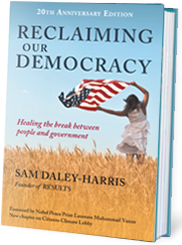 |
| Image Source: reclaimingourdemocracy.com |
Even more, we need to effectively target our actions as citizen advocates with our letters to the editor and our meetings with elected officials. Thus, he introduced me to the Buckminster Fuller concept of ‘Trimtabbing.’ A trimtab is the small rudder fround on the back of a larger rudder on an ocean liner or commercial jet airplane. The trimtab is easier to turn. Buckminister Fuller coined this term when he said that if you wanted to turn the ship of state, you shouldn’t try to push the ship around the front or even try turning the rudder. Instead, find the trimtab and turn that. Then the rudder and ship will turn more easily.
In Sam’s book and his public appearance, effective engagement to influence our democracy starts with healing ourselves. I once Sam say on a YouTube interview, “If the government is broken, we are part of that brokenness and we must engage in healing ourselves too.”
Next time you or someone you know feels hopeless that Congress does not respond to citizens, remember Sam Daley-Harris. Since he founded RESULTS in 1980 to end global hunger and poverty, the federal funding for childhood immunizations, reducing poverty, tuberculosis, malaria, and starvation increased from $42 million a year in 1984 to nearly $600 million dollars annually.
If you ask members of Congress, how is that possible? They will tell you it is because of the work of current and past RESULTS volunteers, such as Marshall Saunders.
Marshall Saunders
Like his mentor Sam Daley-Harris, Marshall Saunders shows us that one person can make a difference in the world and generate political will. He is 77 year old retired real estate broker in San Diego, Califonria.
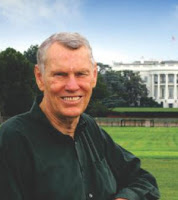 |
| Marshall Saunders, Founder of Citizens’ Climate Lobby Image Source: citizensclimateeducation.org |
Early in his career, he join the Rotary Club. It offers their members an opportunity to learn about the root problems facing the world and the best solutions out there. As a Rotary member, Marshall learned about the problem of global poverty. He also learned about an effective solution of microcredit loans.
Microcredit loans lends people who are so poor in third world countries on one would ever lend them loans of $10, $20, or $50. One woman was lent $50 to buy and fix a broken sewing machine. She then starts a business to lift her family out of poverty. 98% of these loans are repaid. When these loans are repaid, it goes to the next set of loans for the village. Once this gets started, it has a remarkable impact wherever it is generated.
Marshall then became aware of Mohammed Yunis, winner of the 2006 Nobel Peace Prize. Yunis started the modern micro credit loan in Bangladesh when he founded the Grameen Bank. Marshall went to Bangladesh to visit Mohammed Yunis to see firsthand the success of microcredit loans.
When Marshall returned to the US from Bangladesh, he started getting Rotary Club grants to support micro credit loans all over the world. Because of his efforts, Marshall received the Rotary Distinguished Service Award for 1998-1999. He also started microcredit loan program in Mexico.
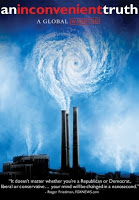 |
| Image Source: youtube.com |
In 2006, Marshall was retired and he could have just rested on his laurels that he made a difference in the world. However, Marshall went to see the Inconvenient Truth documentary about Al Gore. It really shook him up when he saw it.
Marshall had this revelation that there are millions of families living in poverty in Bangladesh who lifted themselves out with microcredit loans. Bangladesh is one of the low elevation countries in the world. Any sea level rise jeopardizes their ability to grow crops there. Marshall says to himself: ‘Wow! I generated a million microcredit loans and it could all possibly be wiped out because of climate change.’
That was the moment Marshall decided to spend the rest of his life working on climate change. In 2007, he asked Al Gore to train him as a Climate Reality Project Leader. Since 2007, The Climate Reality presentation led by Vice President Gore has now trained over 9,200 volunteers worldwide, including Marshall. In 2012, I became a Climate Reality Leader. After the volunteers are trained, folks like Marshall and me give public talks about the science and solutions to climate change.
Marshall gave 43 presentations in 10 months.
About three presentations in, he started to have serious doubts about what he was doing. He was inspiring people to change their light bulbs, carpool more, be more energy efficient etc. However, one morning he opened up the front page of his newspaper on the kitchen table to see that Congress had just given the oil companies an $18 billion tax break.
Marshall thought, ‘Hmm, I got 23 people to change their light bulbs last night and then oil companies get billions of dollars from the government. How do I match that?’
He then realized that the people he really needed to change were in Congress. That was the bad news. The good news is that the whole time he had been working on microcredit in a long time volunteer with RESULTS. This is what RESULTs proves: if you are organized, structured, disciplined, and have volunteer groups set up in Congressional districts, you can get Congress to make a positive and effective actions.
Marshall then said, ‘Piece of cake. All I have to do is find an environmental group using this same methodology and we can get climate legislation passed.’
He then talked to the big environmental groups to see if they were using the RESULTS model. He found a lot of great people doing great things, like the Sierra Club. What he could not find was anyone with a specific and effective plan to get legislation passed.
Thus, in 2007, he started Citizens’ Climate Lobby with one group in San Diego. By the end of the year, there were 6 groups in southern California. Citizens’ Climate Lobby philosophy: ‘We are going to take a system, an approach, a methodology that has been proven to be successful with Congress. We are then going to apply it to the climate issue.’
The purpose of Citizens’ Climate Lobby
Citizens’ Climate Lobby (CCL) prides itself on having a dual purpose:
1. To create the political will for a sustainable climate.
2. To empower individuals to have breakthroughs in exercising their personal and political power.
This mission of Citizens’ Climate Lobby is a living example of Mahatma Gandhi’s quote:
“When the people lead, the leaders will follow.”
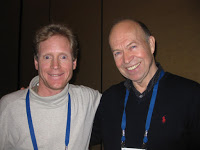 |
| Brian Ettling with Dr. James Hansen |
One of the best advocates for CCL is retired NASA climate scientist, Dr. James Hansen, one of the most respected climate scientists in the world. He stated,
It is not just me that Citizens’ Climate Lobby empowered me. Another area of growth that makes an impact with Congress are the number of volunteers that come to Washington D.C. directly, many at their own expense, to lobby Congress during the annual June CCL Lobby Day. In June 2010, CCL had 27 volunteers lobby 52 Congressional offices. In June 2015, around 900 Citizens’ Climate Lobby volunteers from all across the United States lobbied 487 Congressional offices.
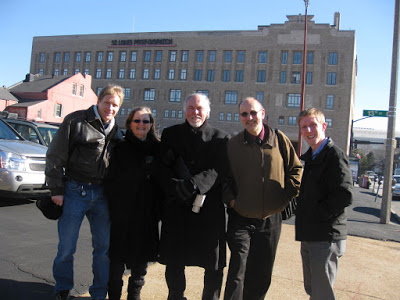 |
| Brian Ettling, Carol Braford, Tom Braford, Steve Valk and Lucas Sabalka after meeting with the editorial board of the St. Louis Post-Dispatch, December 12, 2012. |
As a result the Post-Dispatch did publish this editorial on December 27, 2012: Editorial: Save the planet. Save Social Security. Save Medicaid. Tax carbon. Since I had the Post-Dispatch since I was a child, it seemed surreal to me to be meeting with editorial staff inside the Post-Dispatch building. During the meeting, Steve Valk asked Kevin Horrigan if we could submit opinion editorials periodically to be published. Kevin responded very positively that they would fully consider running opinion editorials from us.
My friend Larry Schweiger, former President and CEO of the National Wildlife Federation, once wrote, “It’s not enough to care; we must link our concern to each other and act collectively.”
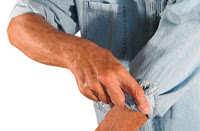 |
| Image Source: wardrobeadvice.com |
Singer and songwriter Joan Baez once said, “Action is the antidote for despair.”
Dr. David W. Orr, Professor of Environmental Studies, Oberlin College, Ohio, proclaimed, “Hope is a verb with its sleeves rolled up.”
Former Vice President Al Gore likes to quote this old African proverb, “If you want to go fast, go alone. If you want to go far, go together.”
If you are as concerned about climate change as I am, I challenge you today to commit yourself to take action. Even more, consider joining a group making an impact like Citizens’ Climate Lobby which is creating the political will for effective climate change action.
As I like to say, “Think Globally, Act Daily.”


